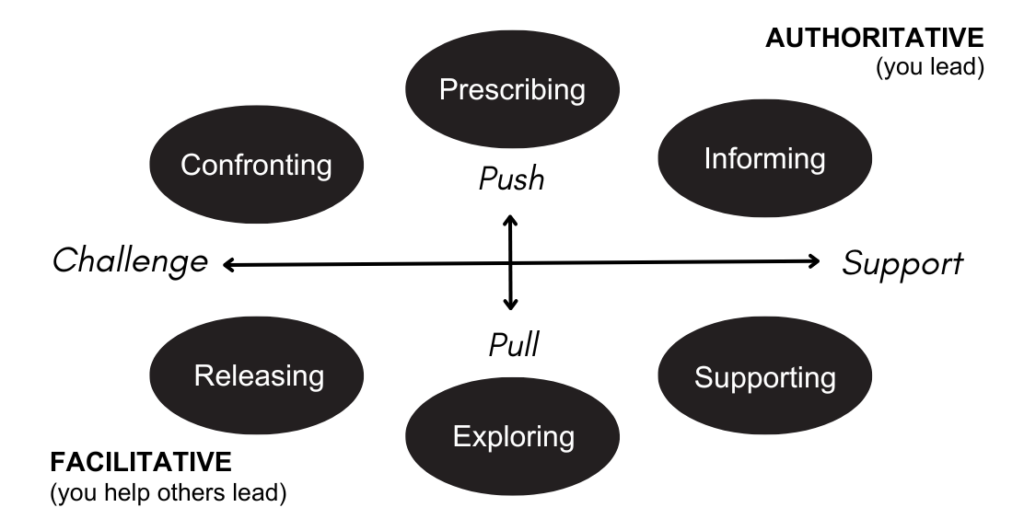Who hasn’t ever wondered:
“What should I do?”
Or perhaps more specifically:
“What’s the right thing for me to do in this particular situation?”
My students, trainees and supervisees ask this question all the time.
I love it when they open it up as part of an inquiry, which we then explore together. But very regularly I get asked very directly, “what (do you think) I should do?”, looking for some authority or certainty on the matter.
And I get the desire. When someone else tells us how it’s done, we can pass on the weight of the responsibility of having to decide for ourselves. The more we know, the fewer choices we have to grapple with. After all, in the face of uncertainty, all choices leave us with a taste of existential anxiety… What if I didn’t make the right choice?
The thing about coaching and supervision is that there’s little that’s definitively right or wrong.
While professional bodies, competency frameworks, codes of conduct, books or experts have lots to say about “how it’s done”, the existential truth is that any such certainty is imagined.
Sure, there’s a lot we can learn from those with more experience than us, but it doesn’t mean they’re right. And it doesn’t mean that we carry any less responsibility for what we do and don’t do.
If observing and deconstructing dozens of live demos in the Coaching Lab has taught me one thing, it’s that there isn’t a one-size-fits-all approach to effective coaching, that different styles work in different ways, and that it’s super context-specific when it comes to what works and what doesn’t.
And so usually my answer to the question of “what should I do?!” is an invitation to explore the context, the range of your capabilities, and to then make a choice and try to embrace the responsibility it carries.
What can help you lean into your authentic style as a coach, trainer, supervisor or other form of facilitator, is Heron’s (1975) model of intervention styles. It’s been adapted to coaching by Eric de Haan’s and his colleagues (there’s even a psychometric tool that offers excellent feedback and development pathways for coaches – the Coaching Behaviours Questionnaire) and offers an awareness of your natural habitat, which in turn allows you to move all over the “playing field” of possible interventions, so that you can adapt how you respond to your clients in a way that is most aligned with what they need and/or what they want.
It’s also an excellent map to use in the contracting phase with new clients, to discuss and agree with what “sort of help they’re after”, on the basis of which you can then decide to what extent you’re willing and/or able to work with them.
Here’s the model:

In coaching and supervision, you might place yourself anywhere on this map. You might frame a narrow and focused space and pick your clients accordingly; or you may learn to move all over this map as and when appropriate.
In an unregulated profession, nobody can really tell you that you’re doing it wrong, if it works for your clients. Yes, the way you work may be in tension with someone else’s model of “how it’s supposed to be done”, but as long as you’re contracting clearly and you’re taking responsibility for your choices, and your clients can give you informed consent to partner with you, you’re good to do your own thing.
So if you ask me what to do, I could tell you what I would be doing (and occasionally I do put that on the table), but I believe passionately that it’s a lot more powerful to hold space for someone to figure out their own style.
I sometimes wish I had simpler answers, and shorter Nuggets! And it can be tempting to reduce the world to simple truths. But here we are, living in a complex world, where the truth is that you’ll never really know with any degree of certainty whether you’re doing it right…
So stay in there! And keep doing the work.
With Love
Yannick
New content: Can I coach a friend, colleague or family member? TaC#71

It is not uncommon that coaches have dual relationships with their clients. The coaching client may also be a colleague, a parent from the community, or a friend of a friend that they sometimes meet in social circles. Some coaches even coach family members or close friends. And sometimes it’s difficult to tell at what point we’re crossing the line between being a friend and coaching a friend. In this episode our resident coaches Nicki, Yannick and Siawash explore the benefits and pitfalls of coaching people who are close to us, as well as the ethics involved in such relationships.
You can listen to this episode or watch it on YouTube.
If you’re hungry for more podcasts, click here!

